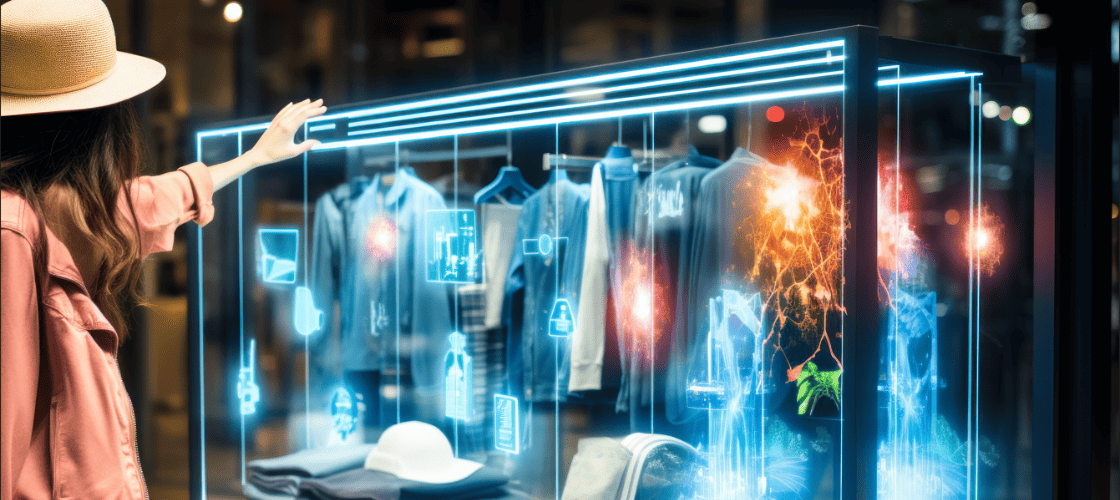Retail & Distribution
A new era of commerce: putting digitally-empowered store associates at the heart of retail performance
17 June 2019

Service excellence powered by unified commerce
Neil Blumenthal, co-founder of a US retail eyewear specialists Warby Parker said: “I don’t think retail is dead. Mediocre retail experiences are dead.”His thriving company embodies the new vision of retail stores championing customer service excellence, powered by unified commerce.
The chain’s showrooms are connected hubs where sales associates are welcoming, slick and attentive, and use in-store technology to streamline the customer experience. Associates carry a tablet which is both a POS device and an omnichannel sales and marketing tool. All use them so quickly and efficiently that customers barely notice transactions being processed. It’s the very definition of a seamless payment encounter.
The technology to facilitate these kinds of in-store experiences is here and affordable. So, it’s not surprising that retailers around the world are seeing the value of putting digitally-empowered store associates at the very heart of retail performance.
From beauty and fashion retailers, like Sephora, L’Oréal, Lacoste and Rebecca Minkoff, to electricals and department stores, like Apple, Best Buy and John Lewis, to luxury groups like LVMH and Chanel, we are seeing a trend for well-trained, fully engaged and highly competent store associates having digital tools with a 360-degree view of the customer at their fingertips. Human interactions are being enhanced within the store and this is driving up conversions and repeat visits. The store is becoming a connected hub – home to previously undreamt-of levels of service and convenience.
Making the joined-up customer experience happen
Unified commerce is essentially the technology that makes the joined-up customer experience happen. It’s the back-end software and front-office integration that is connecting every component of the business, from the customer database and inventory control, to payment, returns, promotions, loyalty and personalisation elements – optimising all stages of the shopper journey.
Modern shoppers are already digitally connected via their smartphones and don’t hesitate to compare prices or look up product information for themselves while shopping. By offering to assist in these areas, and ramp up the experience with personalised offers and easier ways to pay and order goods or redeem loyalty points, retailers are meeting shoppers’ needs head on.
Facilitating the personalised relationship
Empowered with a mobile sales application, store associates have knowledge and insights that will enable them to create a tailored interaction with valued (or new) customers. Instead of getting a scripted sales pitch, customers feel they are receiving a more relevant and personalised service. An associate can identify products and services of interest, perhaps looking at past purchases or previous take-up of promotional deals. With a mobile device the sales associate becomes more of an expert, and a facilitator of great service. Early signs suggest they are more likely to be satisfied in their role, with this level of empowerment.
Shifting the bricks-and-mortar dial
More and more companies are prioritising unified commerce strategies. According to Boston Retail Partners’ 2018 POS/Customer Engagement Survey*, 81% plan to have unified commerce within three years — a move that will help them evolve the customer journey and future-proof their businesses. However, only 3% of brands actually deliver unified commerce capabilities today, according to Acosta’s 2017 survey.
Creating an application that works for each unique organisation can be challenging, and of course collecting, sharing and aligning all the necessary data sets that will underpin connected commerce will require some work – and company-wide commitment.
It can also be difficult to integrate all the necessary touchpoints to facilitate the free flow of information – including stock, logistics, CRM, and sales data – in a secure and compliant manner. Expert advice and ongoing support can be the key to overcoming these challenges and ensuring a transition to more digitally connected stores is properly bedded in.
Ultimately, by mastering unified commerce, retailers can offer customers a personalised and interactive gateway to their brand’s wider ecosystem. It’s a big step, but one that the majority of retailers are preparing to take in their journey towards bricks-and-clicks.
(*Boston Retail Partners 2018 POS/Customer Engagement Survey https://brpconsulting.com/download/2018-pos-survey/)


